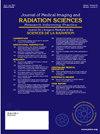放射治疗专业学生的委托专业活动:文献综述
IF 1.3
Q3 RADIOLOGY, NUCLEAR MEDICINE & MEDICAL IMAGING
Journal of Medical Imaging and Radiation Sciences
Pub Date : 2024-10-01
DOI:10.1016/j.jmir.2024.101550
引用次数: 0
摘要
背景澳大利亚不断变化的医疗保健环境要求放射治疗(RT)专业的毕业生在完成培训后,能够在不同的环境中显示出从业能力并做好从业准备。可委托专业活动 (EPA) 被定义为专业实践的单元。它们构成了临床医生的日常工作以及在为患者提供护理时必须履行的职责和任务,例如协助癌症患者进行治疗和模拟设置。本文献综述探讨了在放射治疗设置中实施 EPA 的可行性,以规范监督并帮助学生在缩短的临床实习期间达到立法和学术要求。方法为了确定相关文章,我们使用 MeSH 术语和关键字组合对 Ovid MEDLINE(R) ALL 进行了搜索,搜索了两个主要概念--EPA 和放射治疗,共获得 384 条结果。两位作者根据纳入标准对摘要和标题进行了审查,重点关注 EPAs 在 RT、联合保健和医学教育中的应用。专职医疗和医学教育方面的文献强调了 EPA 对学生和专业教育者的诸多益处,如培养学生的自信心、主人翁意识和对专业发展的责任感。这种方法通过将能力与具体任务联系起来,确保学生在承担独立角色之前掌握基本临床技能,从而有可能提高病人和学生的安全。总之,在 RT 中实施 EPA 将有助于学生和教育者满足不断发展的医疗保健教育需求,并促进 RT 毕业生的标准化能力。本文章由计算机程序翻译,如有差异,请以英文原文为准。
Entrustable Professional Activities for Radiation Therapy Students: A Literature Review
Background
The evolving healthcare landscape in Australia demands that Radiation Therapy (RT) graduates demonstrate competence and readiness to practice in diverse settings upon training completion. Entrustable Professional Activities (EPAs) are defined as units of professional practice. They constitute what clinicians do as daily work and the responsibilities and tasks that must be done in delivering patient care, such as assisting with treatment and simulation setups for cancer patients. This literature review explores the feasibility of implementing EPAs in the RT setting to standardise supervision and aid students in meeting legislative and academic requirements during shortened clinical placements.
Method
To identify relevant articles, a search of Ovid MEDLINE(R) ALL using a combination of MeSH terms and keywords for the two main concepts- EPAs and Radiation Therapy was conducted, yielding 384 results. Abstracts and titles were reviewed by both authors against inclusion criteria focusing on EPAs in RT, allied health and medical education.
Results
While evidence supporting EPAs in allied healthcare and medical settings is abundant, specific evidence for RT practice is limited. Literature in allied health and medical education highlights the number of benefits of EPAs for both students and educators in their specialties, such as cultivation of student confidence, a sense of ownership, and responsibility in professional development. This approach has the potential to enhance patient and student safety by linking competence to specific tasks, ensuring students acquire essential clinical skills before assuming independent roles.
Conclusion
The literature has demonstrated that the standardised use of EPAs may address the challenges of meeting legislative requirements within condensed clinical placements for RT students. Overall, the implementation of EPAs in RT would support both students and educators to meet the evolving demands of healthcare education and promote standardised competence among RT graduates.
求助全文
通过发布文献求助,成功后即可免费获取论文全文。
去求助
来源期刊

Journal of Medical Imaging and Radiation Sciences
RADIOLOGY, NUCLEAR MEDICINE & MEDICAL IMAGING-
CiteScore
2.30
自引率
11.10%
发文量
231
审稿时长
53 days
期刊介绍:
Journal of Medical Imaging and Radiation Sciences is the official peer-reviewed journal of the Canadian Association of Medical Radiation Technologists. This journal is published four times a year and is circulated to approximately 11,000 medical radiation technologists, libraries and radiology departments throughout Canada, the United States and overseas. The Journal publishes articles on recent research, new technology and techniques, professional practices, technologists viewpoints as well as relevant book reviews.
 求助内容:
求助内容: 应助结果提醒方式:
应助结果提醒方式:


